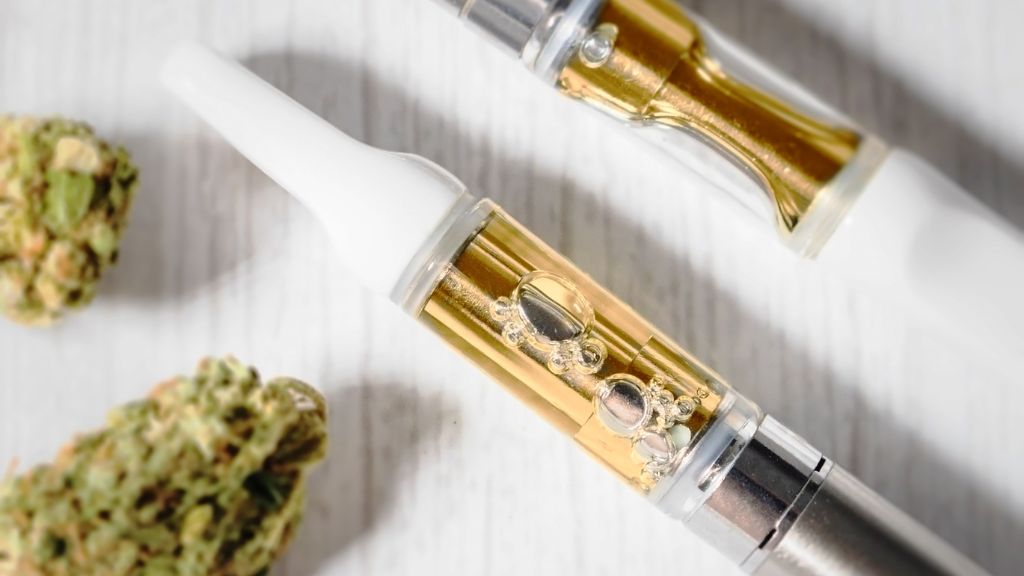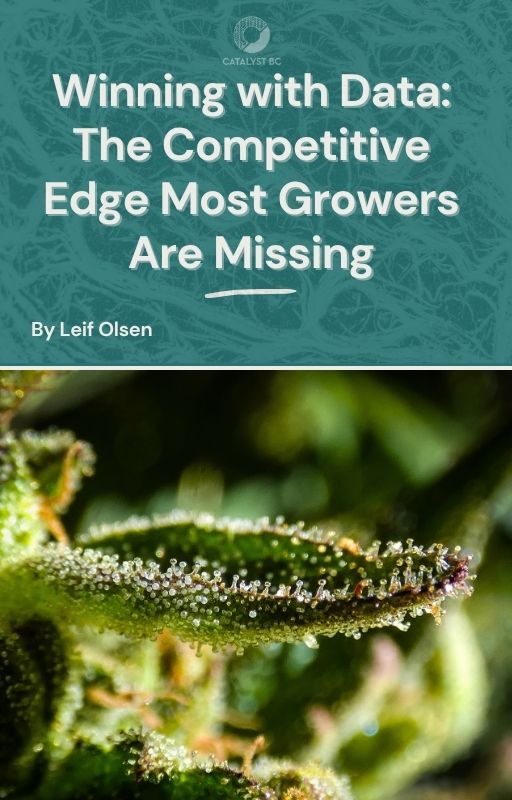Estimated reading time: 12 minutes
Table of contents
- Introduction
- Understanding the Importance of a Cannabis Product Strategy
- Analyzing Market Demand and Consumer Trends
- Conducting Competition Analysis
- Differentiating Your Cannabis Product Offering
- Building a Robust Cannabis Product Portfolio
- Real-World Examples and Actionable Insights
- Actionable Steps to Develop Your Cannabis Product Strategy
- Conclusion
- Cannabis Product Strategy FAQs
- Additional Resources
- Free eBooks For Cannabis Business Success
- Latest Articles
Cliff Notes: Cannabis Product Strategy
Objective: Develop a robust cannabis product strategy that aligns with market demand, leverages competition analysis, and creates a unique value proposition for diverse product offerings.
Key Points:
- Continuously monitor trends and adapt your strategy for sustained growth.
- Analyze Market Demand using consumer surveys and industry reports.
- Conduct Competition Analysis to understand the competitive landscape.
- Differentiate your offerings with a strong Unique Value Proposition focusing on quality, innovation, and customer experience.
- Build a diversified Cannabis Product Portfolio covering flower, edibles, concentrates, and more.
Utilizing a Catalyst BC Cannabis Consultant can make the process significantly more streamlined and focused. Explore our services or contact us today for a Complimentary Consultation.

Introduction
Developing a winning cannabis product strategy is one of the most crucial steps in launching or expanding a cannabis business requiring a deep understanding of market demand, competition analysis, and effective differentiation. This article explains how to develop a robust cannabis product strategy that creates a unique value proposition for your business, leveraging market demand insights, competitive analysis, and smart product differentiation.
In this article, we will cover:
- How to analyze market demand and consumer behavior
- Conducting competition analysis and benchmarking
- Differentiating your cannabis product offering
- Building a robust cannabis product portfolio
- Real-world examples and actionable insights
Understanding the Importance of a Cannabis Product Strategy
A well-crafted cannabis product strategy is essential because it forms the foundation for your business model. It ensures that your product or service mix aligns with both market demand and your company’s core strengths. In addition, an effective cannabis product strategy minimizes risk by addressing the evolving consumer demands and the intense competition in the industry.
Why Develop a Cannabis Product Strategy?
- Market Alignment: When you develop a cannabis product strategy, you align your offerings with the current consumer demand. This means you can respond proactively to market trends and seize new opportunities.
- Risk Mitigation: By thoroughly analyzing the competitive landscape, your strategy helps you mitigate risks. You can identify gaps in the market where your business can offer something different.
- Profitability and Growth: A sound cannabis product strategy enhances profitability by focusing on products that have strong demand and sustainable margins. This also helps in scaling the business effectively.
- Brand Differentiation: Your unique value proposition – which differentiates your business from competitors – is created through a robust product strategy. It ensures that your brand stands out and resonates with the target audience.
Analyzing Market Demand and Consumer Trends
Evaluating Market Demand for Cannabis Products
Understanding Market Demand is the first step in developing your cannabis product strategy. It involves a careful assessment of consumer needs, preferences, and purchasing behavior. If you’re working with our Cannabis Consultants, we can help synthesize this data into actionable strategy recommendations.
How Consumer Demand Shapes Your Offerings
- Consumer Insights: Begin by collecting data on what cannabis consumers are looking for. Are they seeking traditional flower products, innovative edibles, or high-potency concentrates? The answers to these questions help define your cannabis product offering.
- Market Trends: Look at emerging trends such as micro-dosing, organic products, or wellness-infused cannabis offerings. For example, many consumers are now seeking products that promote wellness and sustainability. These trends directly impact the cannabis product portfolio you develop.
- Regulatory Impact: Market demand is also influenced by the regulatory environment. In regions where cannabis is newly legalized, consumers might be more experimental, while in mature markets, there may be a stronger focus on quality and consistency.
By leveraging consumer demand data, you can build a cannabis product strategy that is not only market-driven but also flexible enough to adapt to changing trends.
Tools and Techniques for Demand Analysis
Several tools and techniques can help in accurately gauging market demand:
- Surveys and Focus Groups: Direct feedback from consumers can provide valuable insights into preferences and pain points.
- Industry Reports: Leverage reports from organizations like Marijuana Business Daily or the National Cannabis Industry Association (NCIA) to understand market trends and consumer behavior.
- Sales Data Analytics: Analyze your sales data to determine which products perform well and why. This can help in refining your product portfolio.
These methods help ensure that your cannabis product strategy is built on reliable data and real consumer insights.
Conducting Competition Analysis
Analyzing the Competitive Landscape
A comprehensive Competition Analysis is essential for a robust cannabis product strategy. This analysis involves understanding what products or services your competitors offer, their pricing, marketing strategies, and overall value propositions.
Key Components of Competition Analysis
- Product Benchmarking: Evaluate the range of products offered by competitors. Identify which segments they are focusing on – whether it is premium flower, artisanal edibles, or high-end concentrates.
- Price Positioning: Analyze pricing strategies. Are competitors positioning themselves as premium or value brands? Understanding this helps you position your own cannabis product offering competitively.
- Customer Reviews: Read customer reviews and feedback on competitor products. These insights reveal gaps in the market where your products can excel.
- Distribution Channels: Determine which channels competitors use. For instance, do they primarily sell online, through dispensaries, or via direct-to-consumer models? This can influence your own distribution strategy.
Conducting a thorough competition analysis allows you to design a cannabis product strategy that not only meets consumer demand but also offers a distinct competitive advantage.
Differentiating Your Cannabis Product Offering
Creating a Unique Value Proposition
In a saturated market, a Unique Value Proposition is critical. It defines how your cannabis products or services are different and better than those of competitors. A compelling value proposition will drive customer loyalty and set your business apart.
Strategies for Differentiation
- Quality and Consistency: Emphasize high-quality products with consistent effects. This is especially important for medical cannabis users who rely on precise dosing.
- Innovative Product Design: Innovate with product forms that stand out. For example, if you offer edibles, consider unique flavors or organic ingredients that are not available elsewhere.
- Customer Experience: Provide an exceptional customer experience by offering tailored advice, excellent support, and a seamless purchase process.
- Sustainability: Highlight environmentally friendly practices, such as organic growing methods or sustainable packaging. Consumers increasingly value sustainability, and this can be a key differentiator.
By focusing on these strategies, you can build a cannabis product portfolio that reflects a strong unique value proposition and meets both market demand and consumer expectations.
Building a Robust Cannabis Product Portfolio
Strategic Product Mix
A diverse and well-thought-out product portfolio is crucial to capture different segments of the market. When choosing the cannabis products or services to offer, consider a balanced mix that caters to various consumer needs.
Product Categories to Consider
- Flower: The staple of the cannabis industry, flower products cater to both traditional consumers and those looking for artisanal, organic options.
- Edibles: With a growing focus on health and wellness, edibles that incorporate natural ingredients and innovative dosing formats are increasingly popular.
- Concentrates: Concentrates offer high potency and are preferred by consumers looking for stronger effects. They also appeal to a niche market of connoisseurs.
A diversified product mix not only spreads risk but also provides multiple revenue streams. This is a key element of a robust cannabis product strategy.
Aligning Product Offerings with Consumer Needs
Tailor your cannabis product portfolio to address the unique needs of different consumer segments:
- Medical Cannabis Users: Focus on products with clear therapeutic benefits, consistent quality, and reliable dosing. Ensure these products meet strict regulatory standards.
- Recreational Consumers: Emphasize variety, innovative experiences, and premium branding. Recreational users often seek products that offer unique flavors, effects, or packaging aesthetics.
- Hybrid Consumers: Offer a range of products that cater to both medical and recreational needs, allowing flexibility and choice.
This segmentation ensures that every aspect of your cannabis product strategy resonates with the appropriate consumer group, thereby maximizing market penetration. Our Cannabis Consultants can help you define these segments based on real-world data for your local demographic area.
Real-World Examples and Actionable Insights
Case Studies in Cannabis Product Strategy
Several successful cannabis businesses have built their reputation by implementing an effective cannabis product strategy. For instance:
- Case Study 1: Premium Flower and Edible Line
A leading cannabis brand differentiated itself by offering a premium line of organically grown flower alongside artisanal edibles. By focusing on quality and sustainability, the brand captured both the recreational market and health-conscious consumers. Their strategy involved rigorous quality control, consumer feedback loops, and innovative product packaging that communicated their unique value proposition. - Case Study 2: High-Potency Concentrates
Another successful example is a company that specialized in high-potency concentrates. Their cannabis product strategy emphasized precision extraction techniques and data-driven cultivation methods. By leveraging cannabis consulting services, they were provided actionable insights on optimizing their operations which in turn strengthened their product quality and reputation in the market place.
These case studies illustrate how understanding market demand and conducting detailed competition analysis can lead to a well-differentiated product offering that appeals to multiple customer segments.
Actionable Steps to Develop Your Cannabis Product Strategy
Step-by-Step Guide
- Conduct Market Research: Begin by gathering detailed data on consumer demand and current market trends. Use surveys, focus groups, and sales analytics to inform your cannabis product selection.
- Analyze the Competition: Perform a thorough competitor analysis. Identify gaps in the market where your unique value proposition can shine.
- Define Your Unique Value Proposition: Clearly articulate what sets your cannabis product offering apart. Focus on quality, innovation, and customer experience.
- Develop a Diverse Product Portfolio: Build a product mix that caters to the diverse needs of medical, recreational, and hybrid cannabis users. Ensure each product aligns with consumer expectations.
- Implement a Feedback Loop: Establish mechanisms to continuously gather customer feedback. Use this information to refine your offerings and adapt to changes in market demand.
- Invest in Branding and Marketing: Develop a strong brand identity that communicates your unique value proposition. Use digital marketing, social media, and community engagement to build trust with your target audience.
- Monitor and Adapt: Regularly review your strategy against market trends and consumer feedback. Be agile and ready to adjust your cannabis product strategy as the industry evolves.
By following these steps, in alignment with our cannabis consulting team, you can build a dynamic cannabis product strategy that not only meets current consumer needs but also positions your business for long-term success.
Conclusion
In today’s competitive cannabis market, developing an effective Cannabis Product Strategy is essential. By carefully analyzing market demand, conducting rigorous competition analysis, and creating a unique value proposition, you can choose the right products—whether it is flower, edibles, concentrates—that meet consumer needs. A robust cannabis product portfolio, tailored to medical, recreational, and hybrid users, positions your business for sustainable growth and differentiation.
As the industry continues to evolve, businesses must remain agile, consistently refining their product offerings based on consumer feedback and market trends. A well-executed cannabis product strategy not only drives revenue but also builds brand loyalty and a competitive advantage that sets your business apart.
By embracing innovation, leveraging data analytics, and focusing on quality and sustainability, you can master your cannabis product strategy and create a resilient business model that stands the test of time.
Explore our services or contact us today for a Complimentary Consultation.
Cannabis Product Strategy FAQs
A cannabis product strategy involves selecting the right cannabis products or services to offer, such as flower, edibles, concentrates, based on market demand and competition. Working with our Cannabis Consultants can help ensure your strategy is data-driven and aligned with market opportunities.
Use consumer surveys, focus groups, and industry reports to gauge consumer demand, market trends, and purchasing behavior. Our Cannabis Consulting team can assist with gathering and interpreting this data.
It is the process of evaluating competitors’ product portfolios, pricing strategies, and customer reviews to identify opportunities for differentiation.
Differentiate your offerings by focusing on quality, innovation, and exceptional customer experience, while clearly communicating these benefits.
Flower, edibles, and concentrates are popular, though the demand varies between medical, recreational, and hybrid users.
Trends such as wellness, sustainability, and premium quality directly shape product development and influence consumer choices.
Steps include market research, competition analysis, defining your unique value proposition, and building a diversified product portfolio. Our Cannabis Consulting team can help guide this process from start to finish.
Sustainability is increasingly important, as many consumers value eco-friendly practices and organic product lines.
Track sales performance, customer feedback, and market share data to determine if your product mix meets consumer demand.
Innovation and consistent quality are essential for building a strong brand and ensuring your cannabis product strategy meets consumer expectations.
Stay flexible by monitoring trends, seeking customer feedback, and partnering with our Cannabis Consultants who understands how to pivot effectively in a shifting regulatory and consumer landscape.
Additional Resources
Free eBooks For Cannabis Business Success
Latest Articles
- Cannabis 280E Compliance and COGS Optimization Expert StrategiesThe cannabis industry operates under a unique federal tax burden imposed by Internal Revenue Code (IRC) §280E. While state legalization has flourished, this provision, which denies deductions for ordinary business expenses of trades dealing in controlled substances, remains the single greatest threat to cannabis profitability.
- Owner’s Rep for Cannabis Dispensary Buildout: Expert Compliance & Project ManagementNavigating the highly-regulated world of a cannabis dispensary buildout requires specialized expertise beyond standard construction. The complexity of securing a final operating license, controlling costs, and preventing opening delays for a cannabis dispensary hinges on professional guidance. This is why securing an experienced Owner’s Rep for Cannabis Dispensary Buildout is a critical first step.
- The Indispensable Owner’s Rep for Cannabis Cultivation Facility Buildout: Expert Project Management to Prevent Cost OverrunsIn this high-stakes arena, the Owner’s Rep for Cannabis Cultivation Facility buildout is the crucial strategic partner. They are the expert professional who ensures the owner’s vision is translated into a successful, operational, and profitable reality.
- Cannabis Dispensary Compliance: Training, Inventory & ProfitabilityIn today’s regulated cannabis market, cannabis dispensary compliance is not optional—it is the foundation of a sustainable and profitable retail business. Every dispensary, from boutique shops to multi-state operators, must follow strict dispensary regulatory compliance standards, maintain accurate cannabis inventory management systems, and invest in ongoing cannabis dispensary training programs.
- Beyond Compliance: Implementing a Cannabis Dispensary Secret Shopper ProgramAs a cannabis retail owner, you operate in a high-stakes environment where federal prohibition meets state-regulated commerce. Your retail floor is not just a sales hub—it’s a constant target for mandatory inspection and the front line for brand differentiation. The most critical tool for navigating this complex reality is the professional, recurring Cannabis Secret Shopper program.
- Architects of the Cannabis Industry: What Defines An Expert Canna Consultant?An expert Canna Consultant is the strategic architect and operational engineer of a cannabis venture. They are specialized cannabis industry consultants who translate ambiguous legislation into profitable business processes.











